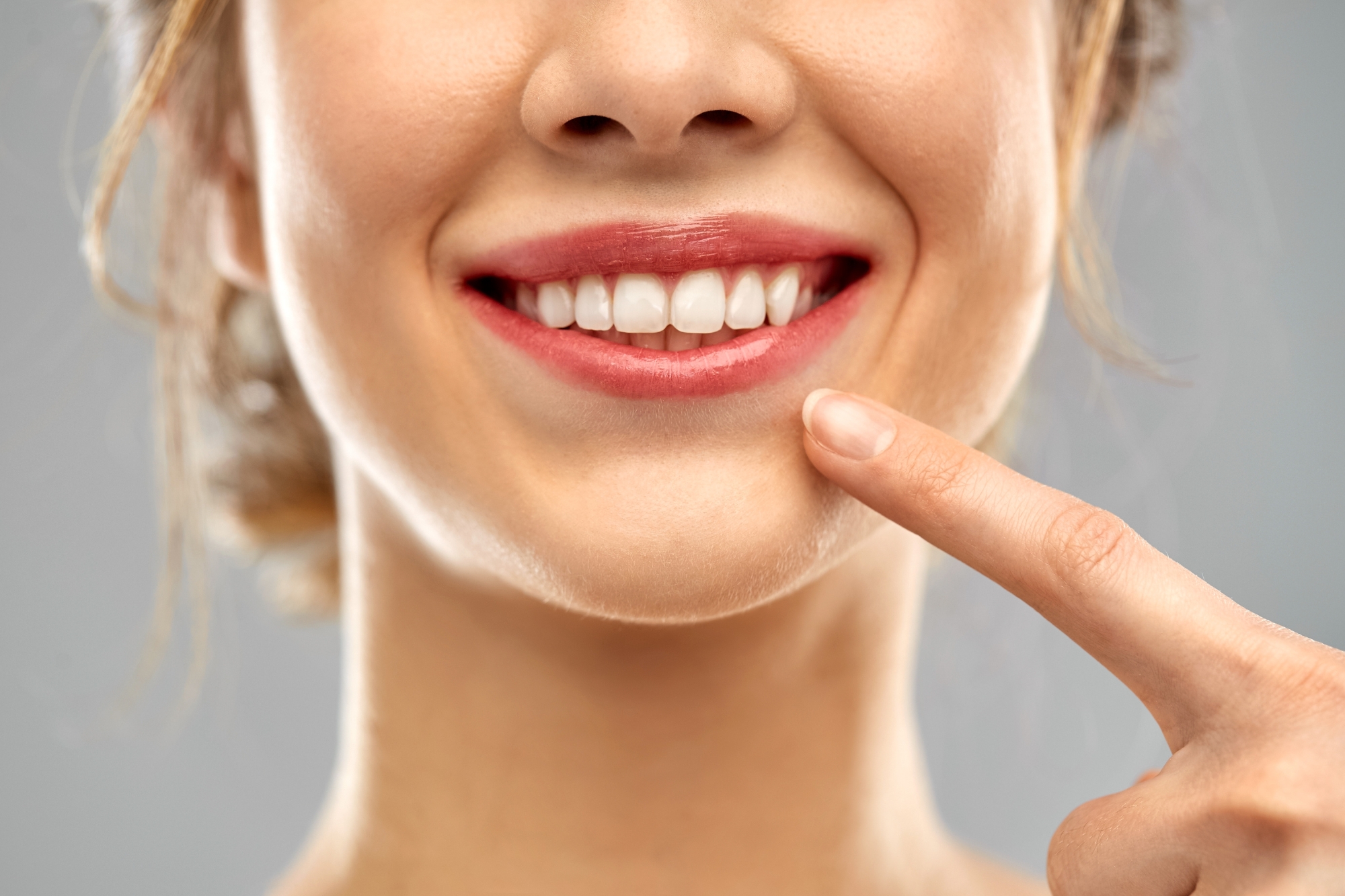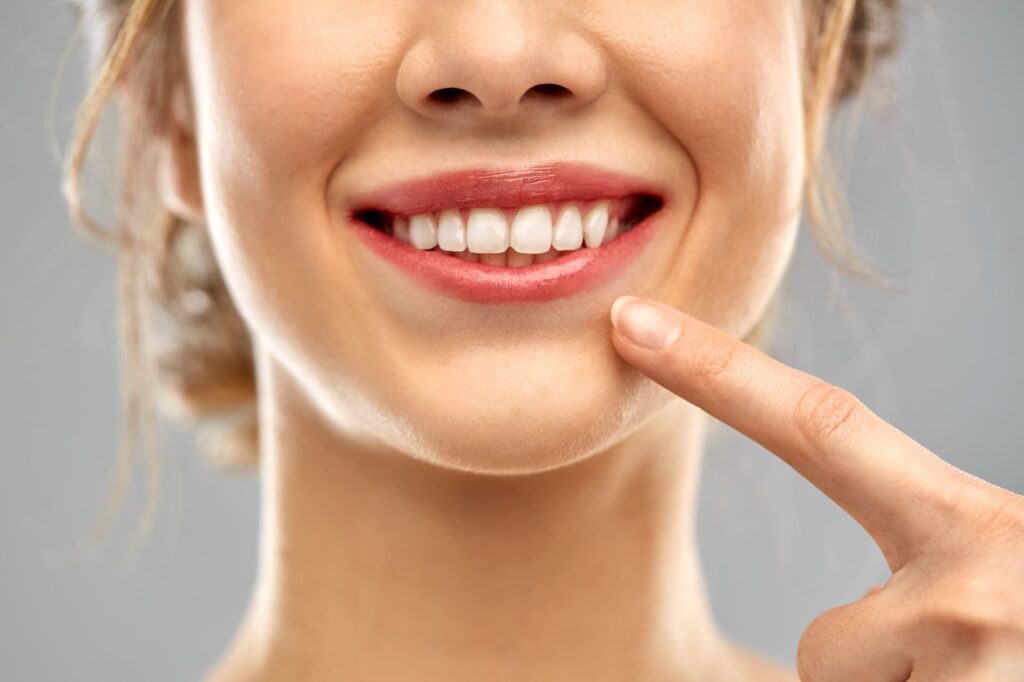Orthodontic Treatment: Unlocking the Power of a Beautiful Smile

Table of Contents

Image Source: Canva
Are you dreaming of a gorgeous smile that lights up a room? Look no further than the transformative power of orthodontic treatment. Whether you're a teenager seeking straighter teeth or an adult hoping to enhance your smile, orthodontics can be a life-changing investment in your oral health and self-confidence. In this comprehensive guide, we'll explore the top benefits of orthodontic treatment, from achieving a beautiful smile to improving chewing function and preventing dental issues. So, let's embark on a journey to discover how orthodontics can unlock the potential of your smile.
Introduction to Orthodontic Treatment
Orthodontic treatment is a specialized branch of dentistry that focuses on correcting misaligned teeth and jaws. It goes beyond mere aesthetics and plays a crucial role in maintaining oral health and overall well-being. Orthodontics can address a wide range of issues, from overcrowded teeth and spacing irregularities to bite problems such as crossbite, overjet, deep bite, and crowding. By utilizing various orthodontic appliances and techniques, orthodontists can guide teeth into their proper positions, improving both functionality and appearance.
Orthodontic treatment has a rich history that dates back centuries. The concept of braces can be traced back to ancient civilizations, with evidence of early attempts to straighten teeth found in archaeological discoveries. However, modern orthodontics as we know it today began to take shape in the 18th and 19th centuries, with significant advancements in dental science and technology. Today, orthodontic treatment has evolved to offer a range of innovative solutions that cater to patients of all ages.
Who Can Benefit from Orthodontics?
Orthodontic treatment is not limited to a specific age group. Both children and adults can benefit from orthodontics, although the ideal time for intervention may vary. Let's explore how different age groups can benefit from orthodontic treatment.
Children and Early Intervention
For children, early intervention is key to addressing orthodontic issues and guiding proper jaw and tooth development. The American Association of Orthodontists recommends that children have their first orthodontic evaluation by the age of 7. This early assessment allows orthodontists to identify any potential problems and create a personalized treatment plan tailored to the child's needs. Early orthodontic intervention can prevent the progression of orthodontic issues, minimize the need for more invasive treatments later in life, and optimize long-term oral health.
Teenagers and Adolescents
The teenage years are a common time for orthodontic treatment, as this is when most permanent teeth have erupted. Many teenagers seek orthodontic treatment to address common issues such as overcrowding, crooked teeth, and bite irregularities. Orthodontics during adolescence can not only correct these dental problems but also boost self-esteem and confidence during a critical stage of social development. With various treatment options available, such as metal braces, ceramic braces, and clear aligners, teenagers can choose the solution that best fits their lifestyle and preferences.
Adults and Late Bloomers
Orthodontic treatment is not limited to children and teenagers. Many adults also seek orthodontic intervention to improve their smile and address long-standing dental issues. Whether it's correcting misaligned teeth that were never treated during childhood or addressing relapse after previous orthodontic treatment, adults can benefit from the transformative power of orthodontics. Advancements in orthodontic technology, such as clear aligners, have made it easier for adults to pursue treatment discreetly and comfortably, without compromising their professional or personal lives.
The Aesthetics of a Beautiful Smile
A beautiful smile is one of the most noticeable and memorable features of a person's face. It can significantly impact self-confidence, social interactions, and overall well-being. Orthodontic treatment plays a crucial role in enhancing the aesthetics of a smile, allowing individuals to feel more confident and comfortable in their own skin. Let's delve into the various ways orthodontics can contribute to a beautiful smile.
Boosting Self-Confidence
Having a smile that you feel proud of can have a profound impact on your self-confidence. Orthodontic treatment can address issues such as crooked teeth, gaps, and bite irregularities, helping you achieve a more harmonious and balanced smile. By straightening your teeth and aligning your bite, orthodontics can transform your appearance and give you the confidence to express yourself freely.
Enhancing Facial Harmony
Orthodontic treatment goes beyond teeth alignment; it can also enhance overall facial harmony. Properly aligned teeth contribute to a balanced facial structure, ensuring that your smile complements your unique features. Orthodontics can correct issues such as protruding or recessed jaws, which can affect facial aesthetics and profile. By creating a more harmonious facial balance, orthodontic treatment can help you achieve a smile that truly reflects your natural beauty.
Correcting Tooth Alignment Issues
Orthodontics can address a wide range of tooth alignment issues, from spacing irregularities to crowding. Spacing issues occur when there are gaps or excessive spaces between teeth, which can affect the overall appearance of your smile. Alternatively, crowding occurs when there is insufficient space for teeth to properly align, resulting in overlapping or crooked teeth. Orthodontic treatment can correct these alignment issues, ensuring that your teeth are properly positioned for both aesthetic and functional purposes.
Improving Chewing Function and Oral Health
While orthodontic treatment can have a significant impact on the aesthetics of your smile, its benefits go beyond cosmetic enhancement. Properly aligned teeth and jaws play a crucial role in improving chewing function and maintaining optimal oral health. Let's explore how orthodontics can contribute to better oral health outcomes.
Addressing Bite Irregularities
Bite irregularities, such as overbite, underbite, crossbite, and open bite, can impact chewing function and overall oral health. An overbite occurs when the upper front teeth overlap the lower front teeth, while an underbite is characterized by the lower teeth protruding beyond the upper teeth. A crossbite occurs when the upper teeth sit inside the lower teeth, and an open bite is when there is a gap between the upper and lower teeth when the jaws are closed. Orthodontic treatment can correct these bite irregularities, ensuring that your teeth meet properly when you bite and chew. By improving your bite, orthodontics can enhance chewing efficiency, reduce the risk of jaw pain and discomfort, and prevent potential dental issues.
Alleviating Jaw Pain and Discomfort
Misaligned teeth and jaws can cause significant jaw pain and discomfort. When your bite is not properly aligned, it can put unnecessary stress on your jaw joints and muscles, leading to temporomandibular joint disorders (TMD). TMD can manifest as jaw pain, headaches, earaches, and difficulty in opening and closing your mouth. Orthodontic treatment can gradually shift your teeth into their proper positions, improving your bite alignment and alleviating the pressure on your jaw joints. By addressing the underlying cause of jaw pain, orthodontics can provide long-term relief and improve overall oral comfort.
Preventing Dental Issues
Crooked or crowded teeth create optimal conditions for dental problems to arise. Misaligned teeth can make it challenging to clean and maintain proper oral hygiene, leading to an increased risk of gum disease, tooth decay, and bad breath. When teeth are crowded or overlapping, it becomes difficult to effectively remove plaque and food particles, creating breeding grounds for bacteria. Orthodontic treatment can align your teeth, creating proper spacing and making it easier to maintain oral hygiene. By preventing dental issues, orthodontics can contribute to a healthier mouth and a brighter smile.
Orthodontic Treatment Options
Orthodontic treatment offers a wide range of options to cater to the unique needs and preferences of each patient. Advances in orthodontic technology have revolutionized the field, providing patients with more discreet, comfortable, and efficient treatment options. Let's explore the different types of orthodontic treatment available:
Traditional Braces
Traditional metal braces have been the go-to orthodontic treatment for decades, and they continue to be a reliable and effective solution. Metal braces consist of brackets that are bonded to the teeth and connected with wires and elastic bands. They exert gentle pressure on the teeth, gradually guiding them into their desired positions. Today's metal braces are smaller, more comfortable, and more aesthetically pleasing than ever before, with various color options for the elastic bands, allowing patients to personalize their braces.
Clear Aligners
Clear aligners have revolutionized the orthodontic industry. Instead of brackets and wires, clear aligners utilize a series of custom-made, virtually invisible aligners that gradually shift the teeth into their desired positions. The aligners are removable, allowing for easy cleaning and maintenance of oral hygiene. Clear aligners offer a discreet and comfortable alternative to traditional braces, making it a popular choice among adults and teenagers who desire a more inconspicuous orthodontic treatment option.
Ceramic Braces
Ceramic braces offer an orthodontic solution that blends seamlessly with the natural color of your teeth, making them less noticeable than traditional metal braces. The brackets used in ceramic braces are made of tooth-colored ceramic material, and the wires can also be tooth-colored or clear. This makes ceramic braces a popular choice for individuals who desire a more aesthetically pleasing treatment option than traditional braces.
When considering orthodontic treatment, it is essential to consult with an experienced dentist or orthodontist who can assess your unique needs and recommend the most suitable treatment option for you. Each treatment option has its advantages and considerations, so a personalized approach is crucial to achieving the best possible results.
The Journey to a Straighter Smile
Orthodontic treatment is a journey, and understanding the process can help set realistic expectations and ensure a successful outcome. Let's walk through the key steps involved in the orthodontic treatment journey:
Initial Consultation and Assessment
The first step in your orthodontic journey is an initial consultation with your dentist or an orthodontist. During this visit, the doctor will conduct a thorough examination of your teeth, jaws, and facial structure. They may take X-rays, photographs, and impressions of your teeth to aid in treatment planning. The doctor will discuss your goals, address any concerns, and explain the treatment options available to you. This is an opportunity for you to ask questions and gain a clear understanding of what to expect throughout the treatment process.
Treatment Planning and Customization
Based on the examination and assessment, the doctor will develop a customized treatment plan tailored to your specific needs. This plan will outline the recommended orthodontic appliances, the estimated duration of treatment, and the expected outcome. The doctor will explain the details of the treatment plan, including the steps involved, the expected discomfort level, and any necessary lifestyle adjustments. This is also an opportunity to discuss financial considerations, payment options, and insurance coverage.
Progress Monitoring and Adjustments
Once the treatment plan is in place, you will begin your orthodontic journey. Regular appointments will be scheduled to monitor your progress and make any necessary adjustments. During these appointments, the doctor will assess the movement of your teeth, make changes to the braces or aligners, and address any concerns or discomfort you may have. It is essential to attend these appointments as scheduled to ensure the treatment progresses smoothly and achieves the desired results.
Retention and Long-Term Maintenance
After your teeth have been properly aligned, a retention phase follows to maintain the results achieved. This typically involves the use of retainers, which help stabilize the teeth in their new positions. Retainers may be removable or fixed, depending on your doctor's recommendation. It is crucial to wear the retainers as instructed to prevent any relapse and maintain the beautiful smile you've worked hard to achieve. Regular dental check-ups and good oral hygiene practices are also essential for long-term maintenance and oral health.
Duration of Treatment
The duration of orthodontic treatment varies depending on the complexity of the case and the treatment goals. On average, orthodontic treatment can last anywhere from several months to a few years. During your initial consultation, the doctor will provide an estimate of the treatment duration based on your specific needs. It's important to keep in mind that each patient's response to treatment is unique, and adherence to treatment guidelines and regular appointments will play a significant role in achieving efficient and timely results.
Discomfort and Oral Care Tips
Orthodontic treatment may cause some discomfort or soreness, especially during the initial stages and after adjustments. This is normal and can be managed with over-the-counter pain relievers and orthodontic wax to alleviate any irritation caused by braces or aligners. It's also important to follow proper oral care practices during orthodontic treatment. This includes regular brushing and flossing, as well as using specialized tools such as interdental brushes or water flossers to clean between brackets and wires. Your doctor will provide specific instructions on how to maintain good oral hygiene during treatment.
Embracing the Journey to a Beautiful Smile
Embarking on an orthodontic journey is an exciting and transformative experience. As you begin your treatment, here are some tips to help you make the most of your orthodontic journey:
Celebrating Milestones and Progress
Orthodontic treatment is a process that takes time, and it's important to celebrate each milestone and progress along the way. Take note of the positive changes in your smile, such as the alignment of teeth and improved bite function. Recognizing your progress can provide motivation and encouragement throughout the treatment journey.
Maintaining Oral Hygiene and Care
Proper oral hygiene is crucial during orthodontic treatment to ensure the health of your teeth and gums. Follow your doctor's instructions for brushing and flossing, and use any recommended tools or products to clean around brackets and wires. Regular dental check-ups are also important to monitor your oral health and address any concerns that may arise during treatment.
Embracing Orthodontic Lifestyle Changes
Orthodontic treatment may require some lifestyle adjustments to ensure the best treatment outcomes. This may include avoiding certain foods that can damage braces or aligners, such as sticky candies or hard nuts. It's also important to protect your orthodontic appliances during physical activities or contact sports by using a mouthguard. Embracing these lifestyle changes will help protect your investment in orthodontic treatment and contribute to a successful outcome.
Conclusion

Image Source: Canva
In conclusion, orthodontic treatment offers numerous benefits, from achieving a beautiful smile to improving chewing function and preventing dental issues. Whether you're a child, teenager, or adult, orthodontics can help you achieve the smile of your dreams. By addressing common dental issues such as crowding, spacing, overjet, deep bite, and crossbite, orthodontic treatment can enhance your facial harmony, boost your self-confidence, and contribute to better oral health.
With a wide range of treatment options available, including traditional braces, clear aligners, and ceramic braces, finding the right solution for your unique needs is easier than ever. So, why wait? Take the first step towards a straighter, healthier smile by scheduling a consultation at our office today. Your journey to a beautiful smile starts now!
Important Links
https://www.dentalstudio4kids.com/7-reasons-for-orthodontic-treatment-how-orthodontics-can-help-you
https://infinitydentalarts.com/reasons-for-braces-and-orthodontic-treatment/
https://www.awbraces.com/why-do-i-need-orthodontics.php
https://davidrossorthodontics.com/3-common-reasons-for-braces/
https://www.heritagedentalsanantonio.com/blog/benefits-orthodontic-treatment-heritage-dental/
The information available on the Website is for general health information only and is not intended to be a substitute for professional medical advice, diagnosis or treatment. You should not rely exclusively on information provided on the Website for your health needs. All specific medical questions should be presented to your own health care provider and you should seek medical advice regarding and before making any changes related to your health.
If you choose to use the information available on the Website without prior consultation with and consent of your physician, you are agreeing to accept full responsibility for your decisions and agreeing to hold harmless Randall K. McVey, DMD PA, its agents, employees, contractors, and any affiliated companies from any liability with respect to injury or illness to you or your property arising out of or connected with your use of this information.
MedicAL DISCLAIMER
Patient Portal
help
Disclaimers
HIPAA
Accessibility
Privacy Policy & Cookie Policy
Terms & Conditions